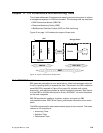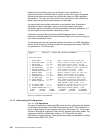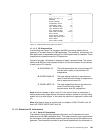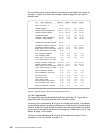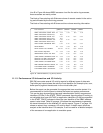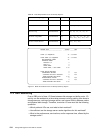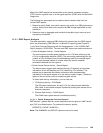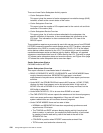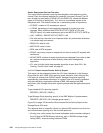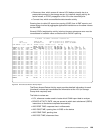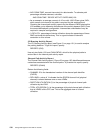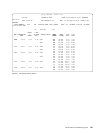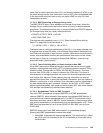126 Storage Management with DB2 for OS/390
There are three Cache Subsystem Activity reports:
•
Cache Subsystem Status
This report gives the amount of cache storage and nonvolatile storage (NVS)
installed, as well as the current status of the cache.
•
Cache Subsystem Overview
This report gives the number of I/O requests sent to the control unit and their
resolution in the cache (hits).
•
Cache Subsystem Device Overview
This report gives, for all online volumes attached to the subsystem, the
specific utilization of the cache. It also consolidates this information at the
LCU level. This information is often correlated with the LCU view of the
DEVICE report.
These statistics reports are
generated by each disk storage server from IDCAMS
LISTDATA command requests to each storage server LCU. Therefore, subsystem
identification is by SSID or a control unit identifier (CU-ID). CU-ID is the lowest
online device number attached to the LCU. This pinpointing is used to establish
correlations between cache and device activity reports. Moreover, all reported
values are
consolidated data from all LPARs sharing the LCU. Figure 48 on page
127 shows cache subsystem status and overview reports, and Figure 49 on page
127 shows the cache subsystem device overview report.
Cache Subsystem Status
CACHING must be ACTIVE.
Cache Subsystem Overview
This report consists of consolidated sets of information:
• READ I/O REQUESTS, WRITE I/O REQUESTS, and CACHE MISSES have
roughly the same structure. SEQUENTIAL lines report a workload
measurement of asynchronous activities. NORMAL lines report synchronous
activities.
• Under MISC, the DFW BYPASS field reports NVS overuse.
ASYNC (TRKS)
displays the data flow between cache and physical disks.
A high value of
ASYNC I/Os with a BYPASS=0 is an indicator of a heavy workload, but the
NVS buffer is adequate.
• Under NON-CACHE I/O, ICL is at zero when DCME is not used.
• The CKD STATISTICS column reports the existence of old channel programs,
which can cause performance degradation if they are still used. Some
system-related tools can still use those channel programs.
• Under CACHE MISSES there are four sets of data:
• NORMAL and SEQUENTIAL lines show respectively synchronous and
asynchronous I/O misses.
• The TRACKS and RATE columns display staging activity from physical
disks to cache. In particular, the
sequential prefetch activity is accounted
by number of tracks read and by rate of the read at the end of the
SEQUENTIAL line.
• CFW DATA is positive when DFSORT uses cache sortwork files.
• TOTAL covers read and write columns only.




